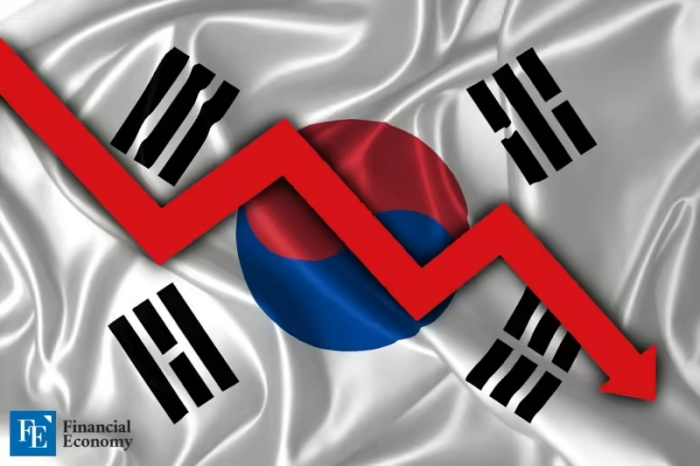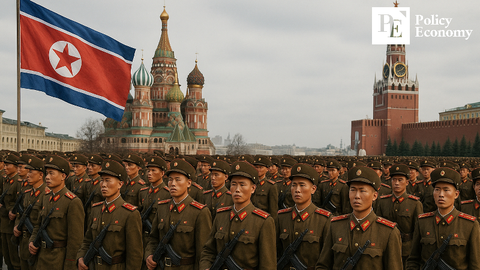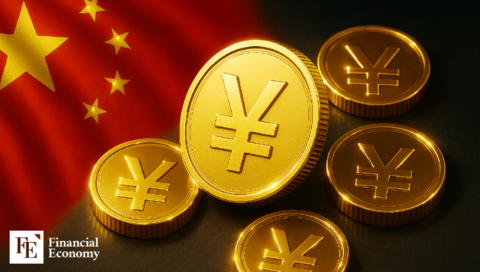Global Economy on the Brink of 'Stagflation'; Consumer Spending Weakens Amid Inflation and Tariff Uncertainty
Input
Changed
Japan's Growth Rate Reverses Amid Consumer Spending Slump U.S. Also Posts Negative Growth for the First Time in 12 Quarters IMF Completely Revises Global Economic Growth Forecast

The global economy is showing signs of a widespread slowdown amid prolonged inflation and uncertainty over tariff policies. In the first quarter, the real GDP of both the U.S. and Japan turned negative, and major European countries as well as China showed weaker-than-expected growth. As key economic indicators from major countries uniformly weaken, the policy responses of governments and central banks are expected to play a crucial role in the future recovery of the global economy.
Japan's GDP Falls at Annualized Rate of 0.7% in Q1
On the 20th of May (local time), Nikkei Asia reported that Japan’s economy contracted by an annualized 0.7% in the first quarter compared to the previous quarter, marking its first negative growth in four quarters. Consumer spending, which makes up more than half of GDP, remained largely flat, with food-related expenditures declining amid continued inflation. Japanese Minister of Economic and Fiscal Policy Ryosei Akazawa expressed concern, stating, “Consumer sentiment is weakening.”
Capital investment—another pillar of domestic demand—increased by 1.4% quarter-over-quarter, driven by spending on software and other digital-related investments. However, outlooks for the future remain pessimistic due to the full impact of former U.S. President Donald Trump’s tariff policies still looming. A Nikkei survey of 10 economists forecast that Japan’s annualized real GDP growth in the second quarter would reach only 0.2%.
Japan’s Q1 performance revealed vulnerabilities in its economy even before the U.S. tariffs were imposed last month. Experts believe the full impact of tariffs will become apparent starting in Q2. Takahide Kiuchi, chief economist at Nomura Research Institute, warned, “The effects of tariffs will begin to surface more clearly between April and June,” adding that “this quarter’s weak growth suggests that Trump’s tariffs could further push Japan into a recession.” UBS economists Masamichi Adachi and Kodo Kurihara also projected, “The second quarter will likely show explicit weakness, and exports could plummet due to the shock of tariffs and uncertainty.”
Economic Indicators Weaken in U.S., Europe, and Beyond
Other major economies are faring similarly. China, grappling with structural issues like a sluggish real estate market, posted 4.9% GDP growth in Q1—below the government’s 5% target. Its April manufacturing PMI also fell below 50, the threshold separating expansion from contraction.
Germany, the economic powerhouse of Europe, is struggling with energy issues due to the Russia-Ukraine war. In Q1, Germany’s economy grew by only 0.8%, recovering from a 0.8% contraction in the previous quarter. Concerns about the future have led households to prioritize saving over consumption. France grew by a modest 0.5%, rebounding from a 0.3% contraction the previous quarter but still displaying fragile signs.
In the U.S., the economy posted negative growth for the first time in 12 quarters during Q1. A spike in imports—caused by businesses rushing to purchase before tariffs took effect—contributed to the GDP decline. Consumer spending rose by 1.8% due to purchases like cars, but this was a sharp slowdown from 4% growth in the previous quarter.
Experts describe the U.S. economy as playing a "bizarre duet": while macroeconomic indicators like employment remain strong, consumer sentiment—the lifeblood of the economy—has been frozen for five consecutive months, reverting to levels last seen during the severe inflation three years ago. Expectations for future inflation are also rising. Consumers now expect prices to surge 7.3% over the next year, the highest figure in 44 years since 1981. This reflects rising prices and growing fears over the declining real value of future income.

IMF Slashes South Korea’s Growth Forecast from 2.0% to 1.0%
Amid declining indicators across developed economies, the International Monetary Fund (IMF) has cut its global economic growth forecast for this year by 0.5 percentage points. This sharp revision reflects the global scale of the trade war triggered by Trump-era reciprocal tariffs. In last month’s World Economic Outlook (WEO), the IMF forecast global growth at 2.8% for this year and 3.0% for next year.
The IMF expects growth in advanced economies to slow to 1.4% this year—down 0.5 points from January—and to 1.5% next year, 0.3 points lower than the previous forecast. For emerging markets, growth is projected at 3.7% this year and 3.9% next year, down 0.5 and 0.4 points respectively from earlier estimates.
By country, the IMF forecasts the U.S. will grow 1.8% this year and 1.7% next year. This marks a downgrade of 0.9 points for this year and 0.4 points for next year from its January forecast of 2.7%. Other revisions include:
- Germany: 0% (down 0.3 points)
- Japan: 0.6% (down 0.5 points)
- UK: 1.1% (down 0.5 points)
- Canada: 1.4% (down 0.6 points)
- India: 6.2% (down 0.3 points)
- Mexico: -0.3% (down 1.7 points)
South Korea’s forecast was also dramatically slashed—from 2.0% in January to 1.0% now—representing the steepest cut among the advanced economies classified by the IMF.





















